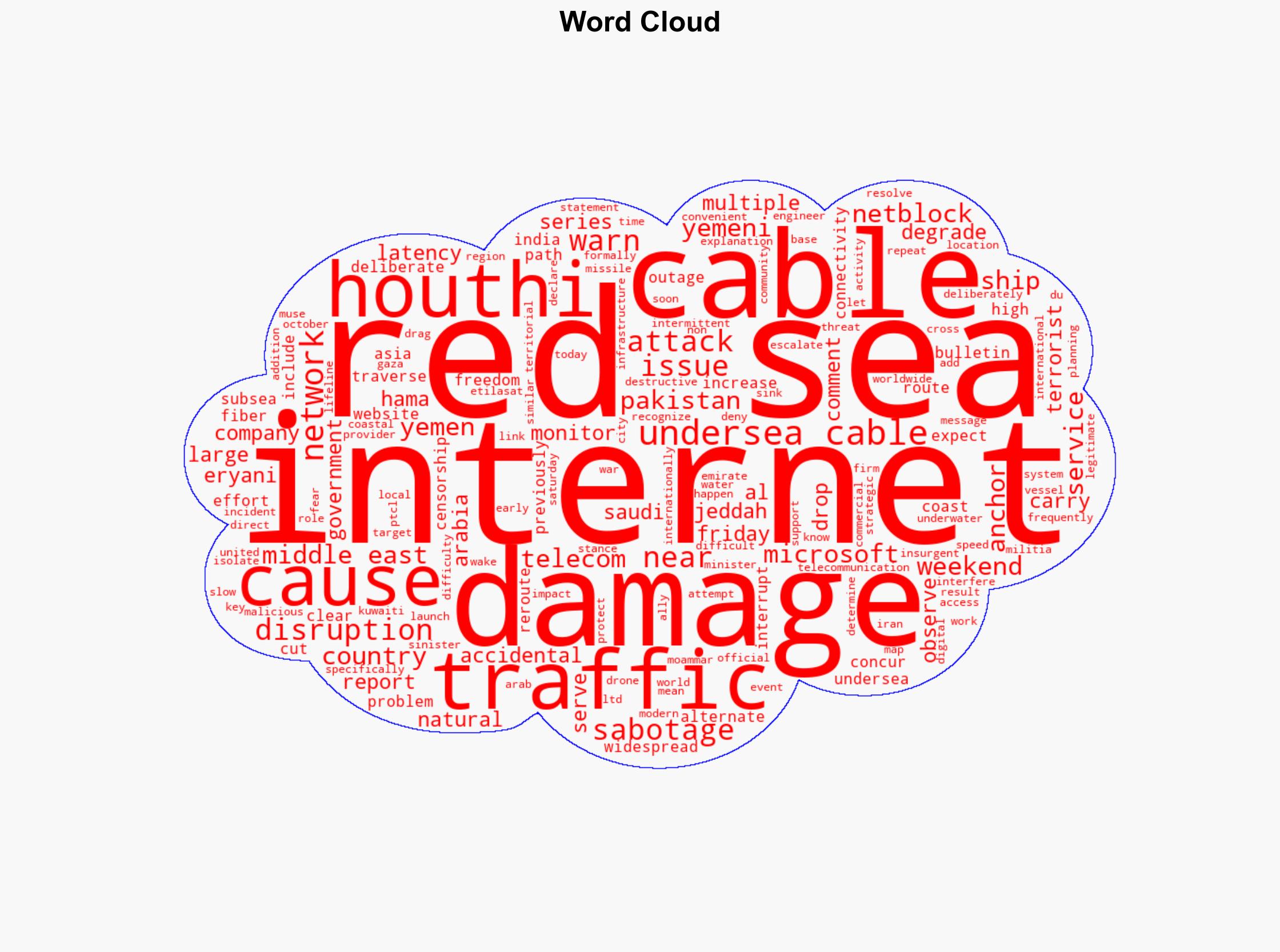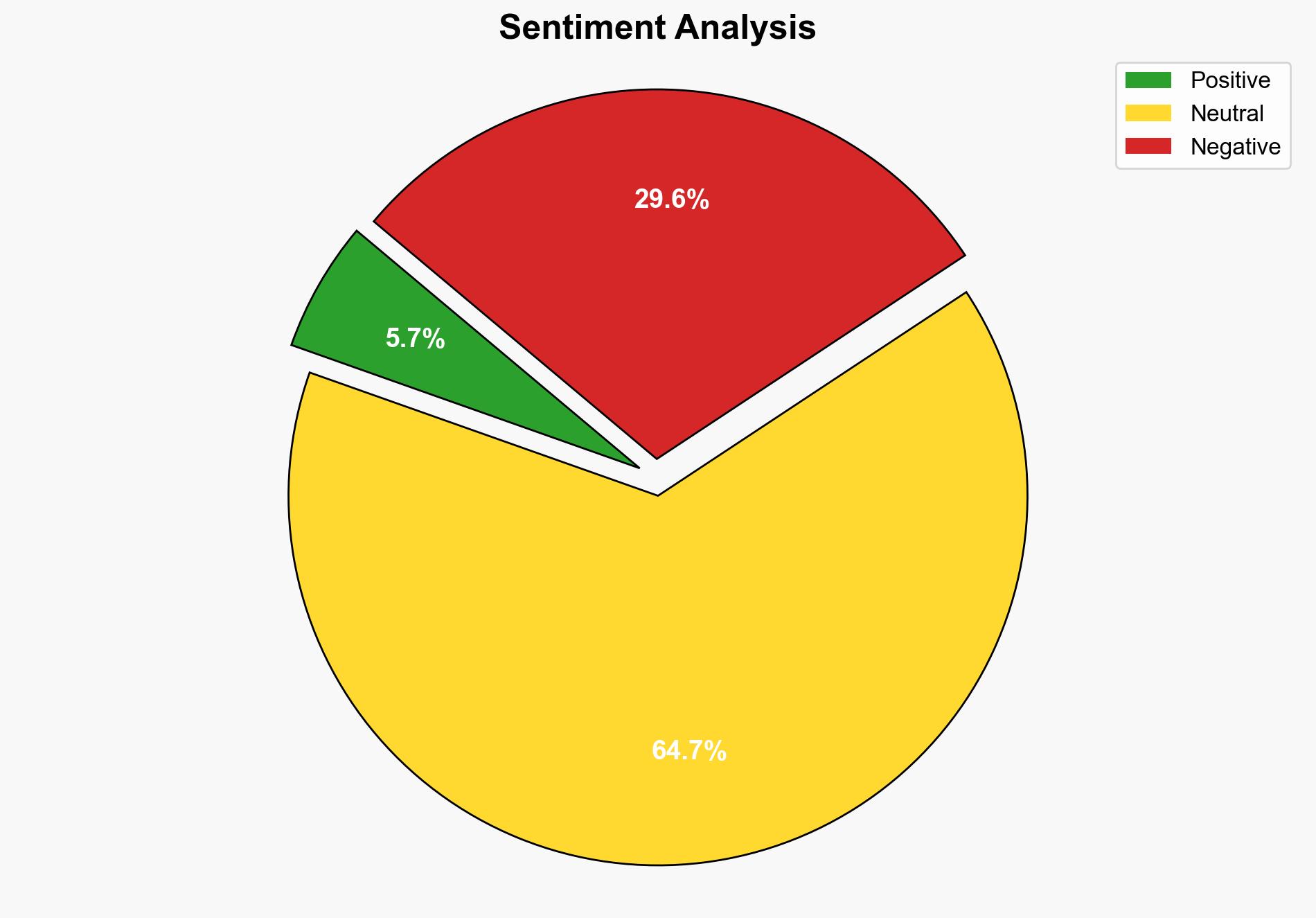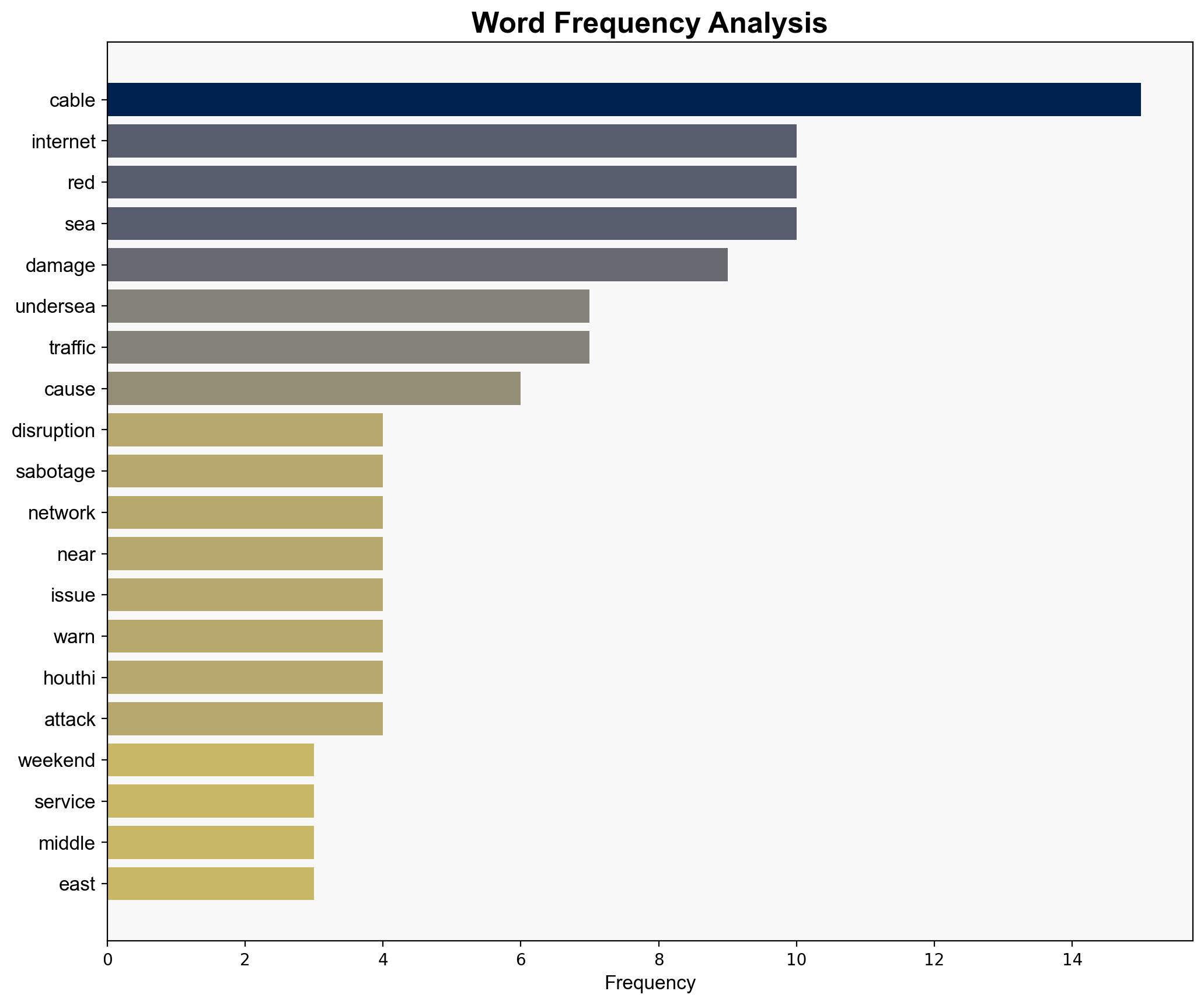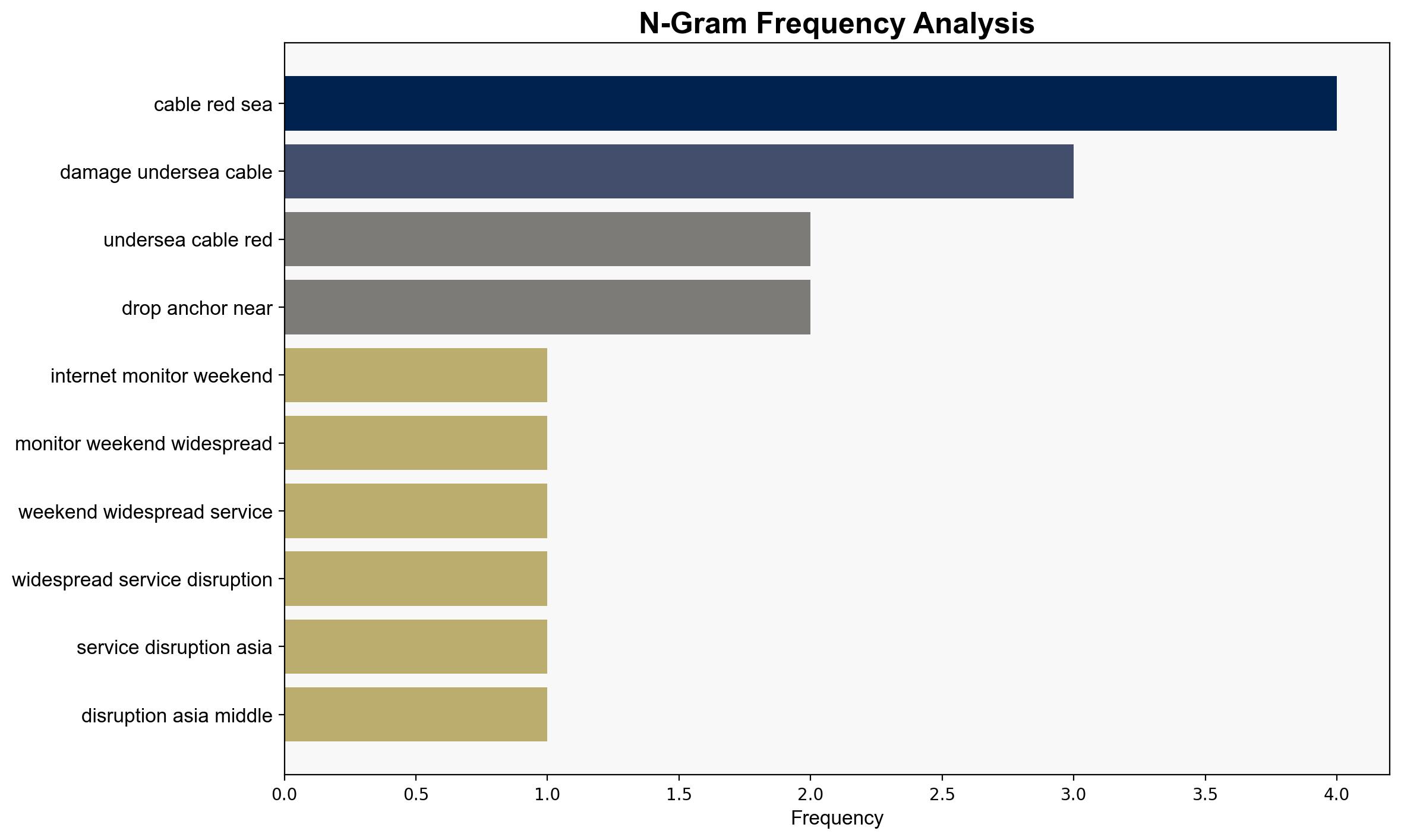Red Sea Cable Damage Disrupts Internet Access for Asia and Middle East – Breitbart News
Published on: 2025-09-08
Intelligence Report: Red Sea Cable Damage Disrupts Internet Access for Asia and Middle East – Breitbart News
1. BLUF (Bottom Line Up Front)
The most supported hypothesis is that the cable damage was accidental, potentially caused by a ship’s anchor, rather than deliberate sabotage. This conclusion is based on the lack of direct evidence linking the incident to hostile actions and the commonality of accidental undersea cable damage. Confidence level is moderate due to the geopolitical tensions in the region. Recommended action includes enhancing monitoring of undersea infrastructure and diplomatic engagement to reduce regional tensions.
2. Competing Hypotheses
1. **Accidental Damage Hypothesis**: The undersea cable damage was caused by an accidental event, such as a ship’s anchor or a natural underwater occurrence. This is supported by the absence of direct evidence of sabotage and the frequent occurrence of such accidents in maritime environments.
2. **Deliberate Sabotage Hypothesis**: The damage was intentionally caused by hostile actors, possibly linked to regional conflicts involving groups like the Houthis or other state-backed entities. This hypothesis is supported by the strategic importance of the cables and historical precedents of similar sabotage attempts in conflict zones.
3. Key Assumptions and Red Flags
– **Assumptions**: The accidental damage hypothesis assumes that there is no credible intelligence indicating deliberate sabotage. The sabotage hypothesis assumes that regional actors have both the capability and intent to disrupt undersea cables.
– **Red Flags**: The lack of a formal investigation report or satellite imagery confirming the cause of damage is a significant gap. The timing of the incident amidst regional tensions could bias interpretations towards sabotage.
– **Cognitive Bias**: Confirmation bias may lead analysts to favor the sabotage hypothesis due to existing regional conflicts.
4. Implications and Strategic Risks
– **Economic Impact**: Prolonged disruptions could affect regional economies reliant on stable internet connectivity.
– **Cybersecurity Risks**: Increased vulnerability of undersea cables may prompt further attacks or copycat incidents.
– **Geopolitical Tensions**: If perceived as sabotage, this could escalate tensions between regional powers, potentially involving international stakeholders.
– **Psychological Impact**: Public perception of insecurity in digital infrastructure could lead to loss of trust in regional stability.
5. Recommendations and Outlook
- Enhance surveillance and protection of critical undersea infrastructure through international cooperation.
- Engage in diplomatic dialogue with regional actors to de-escalate tensions and prevent future incidents.
- Scenario Projections:
- Best Case: Damage is confirmed accidental, leading to improved maritime safety protocols.
- Worst Case: Incident is confirmed as sabotage, escalating regional conflicts and prompting retaliatory actions.
- Most Likely: Incident remains ambiguous, leading to increased security measures and cautious diplomatic engagement.
6. Key Individuals and Entities
– Moammar Al Eryani
– Microsoft
– Netblocks
– Pakistan Telecommunication Company Ltd (PTCL)
7. Thematic Tags
national security threats, cybersecurity, counter-terrorism, regional focus




